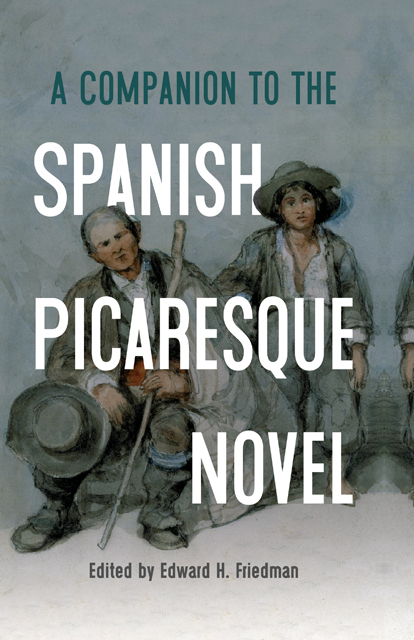Book contents
- Frontmatter
- Contents
- List of Illustrations
- List of Contributors
- Foreword
- 1 The Picaresque as a Genre
- 2 On the Picaresque and Its Origins
- 3 Francisco Delicado, La lozana andaluza
- 4 Lazarillo de Tormes
- 5 Mateo Alemán, Guzmán de Alfarache
- 6 Francisco de Quevedo, La vida del Buscón
- 7 La pícara Justina
- 8 Alonso Jerónimo de Salas Barbadillo, La hija de Celestina
- 9 Miguel de Cervantes and the Picaresque
- 10 Vicente Espinel, Marcos de Obregón
- 11 Carlos García, La desordenada codicia de los bienes agenos
- 12 Estebanillo González
- 13 Critical Approaches to the Picaresque
- 14 The Picaresque in Spanish America
- 15 Continuations: France and England
- 16 The Continuity of the Picaresque: Spain
- Bibliography
- Index
- Tamesis • Companions
8 - Alonso Jerónimo de Salas Barbadillo, La hija de Celestina
Published online by Cambridge University Press: 11 January 2023
- Frontmatter
- Contents
- List of Illustrations
- List of Contributors
- Foreword
- 1 The Picaresque as a Genre
- 2 On the Picaresque and Its Origins
- 3 Francisco Delicado, La lozana andaluza
- 4 Lazarillo de Tormes
- 5 Mateo Alemán, Guzmán de Alfarache
- 6 Francisco de Quevedo, La vida del Buscón
- 7 La pícara Justina
- 8 Alonso Jerónimo de Salas Barbadillo, La hija de Celestina
- 9 Miguel de Cervantes and the Picaresque
- 10 Vicente Espinel, Marcos de Obregón
- 11 Carlos García, La desordenada codicia de los bienes agenos
- 12 Estebanillo González
- 13 Critical Approaches to the Picaresque
- 14 The Picaresque in Spanish America
- 15 Continuations: France and England
- 16 The Continuity of the Picaresque: Spain
- Bibliography
- Index
- Tamesis • Companions
Summary
La hija de Celestina (Celestina’s Daughter, 1612) is one of the most original experiments in the tradition of the female picaresque. Its author, the novelist Alonso Jeronimo de Salas Barbadillo (1581–1635), was a prolific writer who penned over 75 pieces of various lengths and registers, including the 1613 approval of Miguel de Cervantes’s Exemplary Novels. His satirical portraits inherited many of the misogynist tones of his antecedents, allowing him to examine contemporary follies through the social practices of courtesans, misanthropes, prostitutes, and swindlers. Spanning over four decades and frequently set in Madrid, Salas’s career witnessed the publication of narrative masterpieces such as Guzman de Alfarache and El Buscon (The Swindler), as well as other titles akin to his personal tastes, such as Cervantes’s Don Quijote and Lope de Vega’s La Dorotea. Not to be outdone by any of his contemporaries, he experimented with hagiographic poetry, interludes, (pseudo-) scientific writing, the short story, literary criticism in a Parnassian setting, gazette-type compositions, and a few comedies in prose, among other modes and genres. One of the best contemporary critics, Antonio Rey Hazas, has defined Salas as “el mejor novelista espanol de su epoca, el mas innovador, el que ensayo mayor cantidad de nuevas formulas narrativas con inteligencia, el que mas renovo el panorama manido de la llamada novela cortesana, mezclandola con la picaresca, fundiendola en diversas mixturas” (“the best Spanish novelist of his time, the most innovative, the one who experimented with more narrative formulae, the one who did most for the so-called genre of the novela cortesana, mixing it with the picaresque, [and] blending it in different ways with other forms” [“Introduccion,” Picaresca femenina 24]; my translation). La hija de Celestina, one of his early pieces, chronicled the life and misadventures of a beautiful prostitute called Elena, whose story was inserted into a larger, Italianate text narrated in the third person. The novel was received favorably, which prompted a second version with some new material under the title La ingeniosa Elena (The Ingenious Elena, 1614).
- Type
- Chapter
- Information
- A Companion to the Spanish Picaresque Novel , pp. 93 - 102Publisher: Boydell & BrewerPrint publication year: 2022



